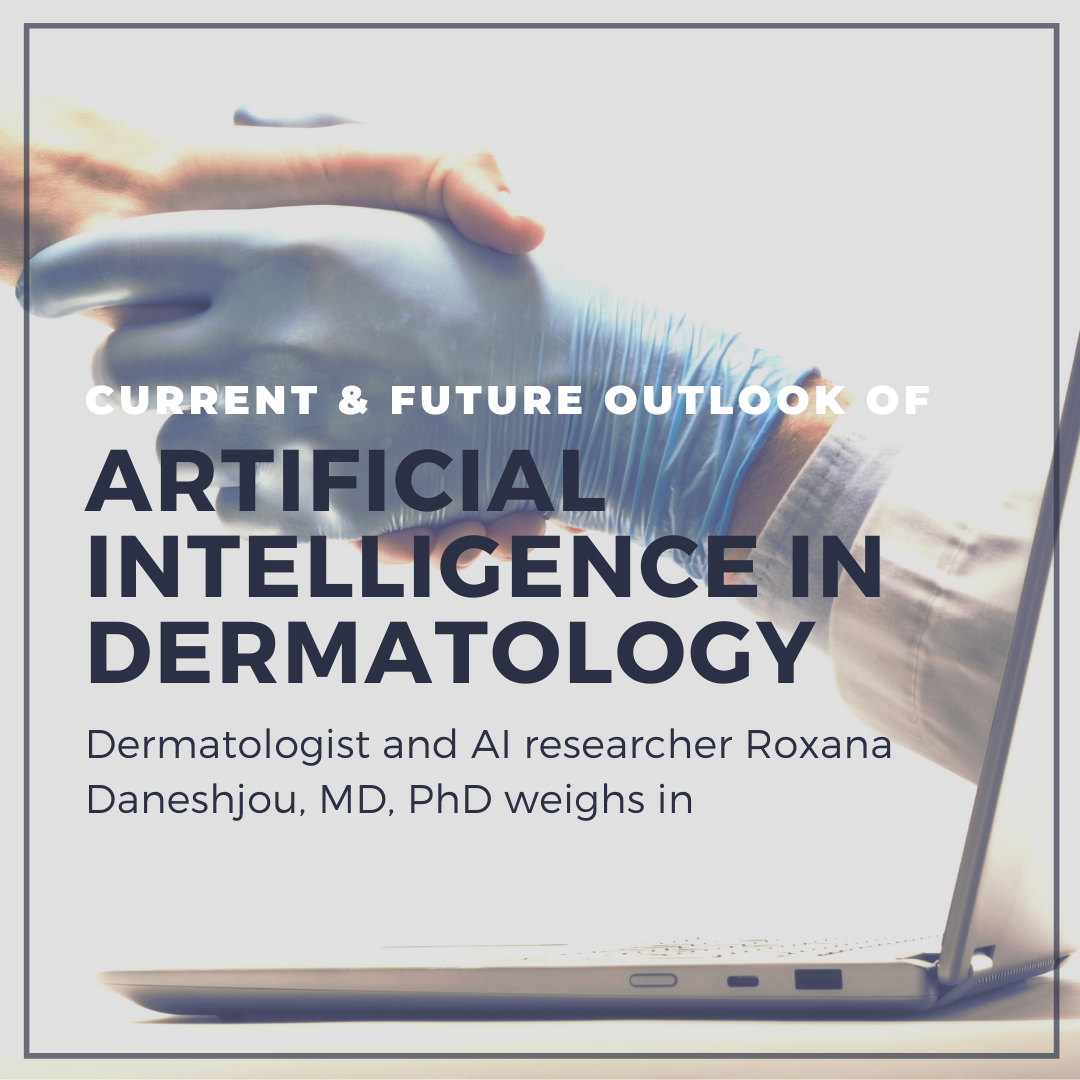Dermatologist and artificial intelligence (AI) researcher Roxana Daneshjou, MD, PhD weighs in on Google’s Derm Assist tool and the current and future outlook of artificial intelligence in the specialty.
Google’s announcement of its new dermatology search tool – Derm Assist — made headlines recently for putting artificial intelligence to work in identifying possible skin conditions. The tool is designed to provide information that can guide patients to make more informed decisions about their next steps, and Google hopes to pilot Derm Assist later this year.
Is Derm Assist good for dermatology, and what’s the current and future outlook of artificial intelligence in the specialty? For expert insight, I contacted dermatologist and AI researcher Roxana Daneshjou, MD, PhD, clinical scholar in dermatology and postdoctoral scholar in biomedical data science at Stanford University.
What are your thoughts on Google’s new dermatology search tool? Do you think the tool, as announced, will improve patient care?
I believe that applications of artificial intelligence in dermatology have the potential to improve patient care. I also believe that the Health team at Google has pushed AI in the dermatology field forward with their research and published papers. However, AI research is not the same as AI directly impacting patient care. Dermatologists, including myself, were involved in discussing the application of the SPIRIT-AI and CONSORT-AI guidelines for clinical applications of AI in dermatology. As quoted from that paper, “Before the widespread adoption of AI interventions, randomized trials should be conducted to evaluate their efficacy, safety, and cost effectiveness in clinical settings.” Currently, it is not clear how patients will use Derm Assist. If patients use Derm Assist for diagnostic purposes, then clinical trial data is needed to determine whether it improves patient outcomes. As of now, there have been no published clinical trials looking at patient use and patient outcomes with the use of Derm Assist.
A retrospective trial looked at how non-specialists using Derm Assist performed at diagnosing skin lesions; however, it was not a prospective trial looking at the use of the device in actual clinical practice. Notably, most of the images used in this study did not have biopsy confirmation for the skin malignancy diagnoses. Prospective clinical trials with Derm Assist may come in the future and will be of great interest. If Derm Assist is intended to be used by non-specialists for dermatological diagnosis, a prospective clinical trial in a real-world setting will need to demonstrate that it helps patients and has no unintended harms. Additionally, in these trials, we should pay special attention to making sure that performance is consistent across all skin tones. This Wired article provides some insight on regulatory issues that also may be involved in launching the tool in the U.S.
What is the current landscape of AI in dermatology?
In the U.S., there are currently no FDA-approved dermatology AI tools. Outside the U.S., there are some skin tracking/lesion-diagnosing applications in Europe that have CE mark. However, a recent BMJ article pointed out concerns about how well these applications performed in identifying high-risk lesions. There is also a concern that there may be a high number of false positives among lesions flagged as “high-risk,” creating unneeded anxiety.
What’s the need for AI in dermatology? What do you say to dermatologists who are concerned their expertise will be replaced with AI?
AI has the potential to augment the ability of dermatologists. Many research papers claiming performance as good or better than a board-certified dermatologist are actually performing a narrow task that is not representative of the full clinical workflow. At this point there are no FDA-approved AI algorithms or algorithms capable of replacing a dermatologist’s expertise.
A recent study by Tschandl et al. showed that clinicians paired with AI performed better than either clinicians or AI alone in classifying benign versus malignant dermoscopic lesions. In the future, validated AI applications could provide decision support, with clinicians and AI working together for better outcomes. Of course, any such algorithm will have to be thoroughly vetted with clinical trials prior to deployment and monitored for appropriate outcomes.
What is the potential of AI in dermatology?
The potential is for improving our workflows and for providing decision support or “augmenting” our capabilities. For example, AI tools could be used for helping triage cases or help automatically detect photos that are poor quality for telemedicine; many of these capabilities would be done alongside clinicians rather than replacing them.
What concerns do you have about AI in dermatology? Should AI tools prove their accuracy before release and, if so, in what ways?
AI tools that claim to perform any diagnostic medical task need to be approved by the FDA. AI tools with the potential to impact patient outcomes should be thoroughly vetted through prospective trials in their intended use setting to ensure unbiased performance, improved patient outcomes, and no patient harms. Dr. Ade Adamson has written about the potential for biased AI algorithms that do not perform as well on skin of color.
How should dermatologists respond to patient questions about the Google tool and other AI tools in dermatology?
In the U.S., there are no FDA-approved diagnostic devices in dermatology. Patients should bring any concerning lesions to the attention of a board-certified dermatologist.
Editor’s Note: For more information on issues to consider for the implementation of AI in dermatology, Dr. Daneshjou recommends reading, “Towards Realization of Augmented Intelligence in Dermatology: Advances and Future Directions,” written by Dr. Daneshjou, Dr. Carrie Kovarik and Dr. Justin M Ko.
Did you enjoy this Patient Buzz Expert Commentary? You can find more here.

